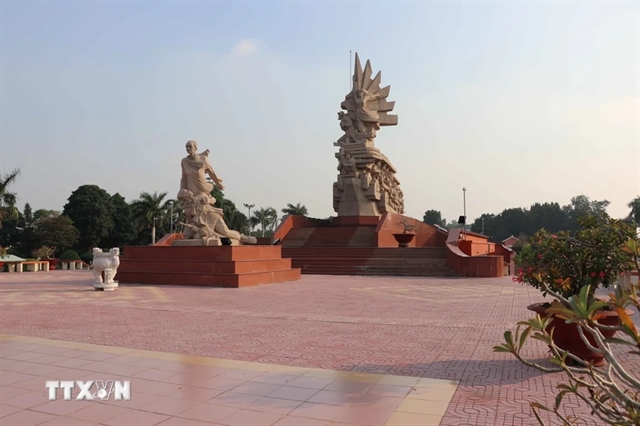Long An applies digital technologies in relic preservation
Culture - Ngày đăng : 09:24, 30/09/2024
 |
| Long An Victory Monument in Tân An City. The province has been putting up signboards with QR codes at different cultural and historical heritage sites that display information for visitors' viewing benefit. VNA/VNS Photo |
The Mekong Delta province of Long An is applying digital technologies to better educate the public at historical heritage sites.
At the Long An Victory Monument in Tân An City’s Ward 5, the province’s Youth Union has put up a signboard with QR codes for visitors to scan with their mobile devices, which will display information in detail about historical events and artefacts, along with 360 degree images, photos and video clips.
This initiative aims to help visitors have a better understanding and appreciation for these important events during the Viêt Nam-US war.
Nguyễn Thị Yến Nhi, a Tân An local, said that she was excited for the addition of these QR codes, which helps publicize the province’s rich history to visitors at home and from abroad.
Other sites around Long An have also been given the same treatment, providing easily accessible history lessons to tourists without the need for on-site guides.
For instance, back in May, Đức Hòa District set up 35 signboards across the region, each of them containing four QR codes for national-level historical heritage sites, 13 codes for provincial-level historical sites, and 18 codes for noteworthy tourist destinations in the district. This initiative was widely promoted on social media and online platforms.
The Youth Union of Bến Lức District also worked with media teams to produce digital content such as photos, video clips with narration, and set up signboard with QR codes at the district's 10 heritage sites. According to a local, this helped him gain a better understanding on local history and people who had given the lives for the liberation war.
 |
| This signboard helps visitors easily learn more about the history of each heritage site. VNA/VNS Photo |
Đỗ Thị Kim Dung, director of the Long An Museum and Library, said that the province has a rich history and traditional culture, with 21 national-level historical and cultural heritage sites, and 105 provincial-level heritage sites.
Noteworthy historical sites include House of Bộ Thỏ, where the first Communist Party cell of Chợ Lớn (now part of Hồ Chí Minh City) was formed, Đức Hòa Crossroads Relic Site, the Memorial Site for Lawyer Nguyễn Hữu Thọ, the Base of the Regional Party Committee and Administrative Committee of the Southern Resistance, Vàm Nhựt Tảo Relic Site, and many other historic areas.
Her museum is also preserving over 23,200 artefacts and documents, including two national treasures - the Statue of Vishnu and the Gò Xoài Gold Antiques Collection.
The Long An Museum and Library is working on a provincial-level project to build a database to manage and promote intangible cultural heritage on digital platforms, so the public can easily learn more about them.
It is working with the province's Tourism Information and Promotion Centre to upload information on its heritage sites at https://dulichsolongan.com and https://www.dulichsolongan.vn.
Long An is strengthening its efforts to keep track of and digitise information related to national treasures, historical and cultural relics and intangible cultural heritage, to build a unified cultural heritage database to preserve and manage them.
It is also looking into applying different technologies to better preserve its relics.
Nguyễn Tấn Quốc, deputy director of the province's Department of Culture, Sport and Tourism, said that the preservation of relics and cultural heritage linked with digital transformation for tourism growth and providing new experiences is an important direction for development for the province. VNS
